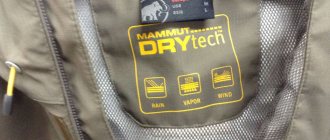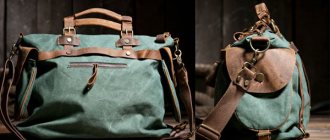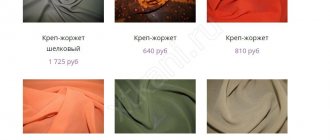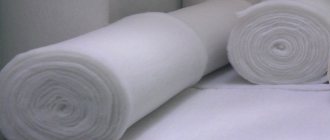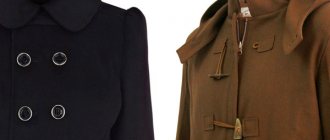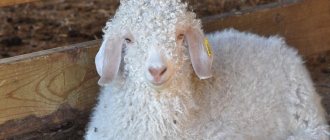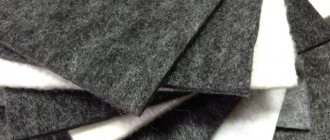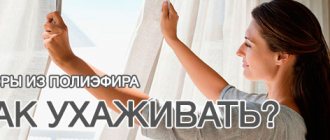What type of fabric is this?
Lyocell is the result of applying high technology to eucalyptus fiber (an evergreen woody plant of the myrtle family). Its wood is exposed to a mild organic solvent until it becomes a soft and delicate fiber. The material obtained in this way is considered absolutely safe, and its production does not pollute the environment.
Lyocell colors
Main stages of lyocell production:
- dissolving cellulose to obtain pulp - a paste-like mixture;
- filtering the mixture and cooling it;
- fiber formation.
The resulting fiber is woven on a loom using different weaving methods to produce a lightweight fabric with a soft and silky surface.
Lyocell is registered under several trademarks - “Orcel” (Russia) and “Tensel” (USA). These two states produce this nanomaterial. In addition, the production of lyocel is being established in China and South Korea.
Composition and production
Although lyocell comes to the market under different names, the basis of the fabric was cellulose, which is obtained artificially, but from natural eucalyptus wood, which imparts bactericidal properties to the fibers. The production technology of the unique fabric, in contrast to the process during which viscose is obtained, is simplified as much as possible, does not harm nature and the environment, for which it was awarded a special European award.
In order for lyocell fibers to acquire the properties characteristic of cotton:
- The raw materials are washed with water and pulp is obtained.
- The moisture is evaporated and methylmorpholine oxide is added.
- The components are mixed and heated to 100°.
- The resulting suspension is placed to cool and filter in a bath with a solution consisting of zinc, sodium sulfate and sulfuric acid.
Threads are drawn from the cooled mass, which leads to the breaking of bonds between molecules and the formation of fibers with unique properties. After special treatment, the threads become fluffy and shiny. The cellulose is dyed and soft fabric is made by plain weaving.
The organic solvent used in the production of lyocell does not emit toxic substances and does not generate waste that is dangerous to humans.
In the production of viscose, which, unlike lyocell, fades in the sun, wrinkles, and shrinks after washing, the fibers undergo merceration, are treated with toxic carbon disulfide, and require deairing and prolonged ripening.
Reference! Lyocell is an amazing fabric that is not inferior to satin in strength, hygiene - cotton, shine - natural silk, wear resistance - synthetics.
Fabric composition and its properties
In appearance, lyocell resembles silk, in tactile sensations it is similar to cotton, and in strength it is similar to satin.
Cotton
What are the properties of cotton or cotton fabric? What are its areas of application?
more details
Satin
What is satin fabric? How is it made and what are its properties?
more details
Silk
Fame and luxury: a detailed review of silk fabric
more details
Main properties of the material:
Durability - does not tear when wet and has high wear resistance
Hygroscopic, absorbs moisture well
Smoothness and silkiness
Hypoallergenic - does not cause skin irritation
Does not accumulate dust
Breathability
Easy to use and maintain
Kinds
Research related to the development of Lyocell was carried out in several countries at once. Therefore, as with microfiber, the finished product has several names. Lyocell is available under the following names:
- Tencel® (manufactured by Lenzing Inc in the USA since 1993;
- Orcel® (was developed in Russia at VNIIIIPV, Mytishchi).
Now production is carried out only by Lenzing Inc.
In finished products you can most often find the following fabric composition. This
- Lyocell;
- Lyocell + elastane;
- Lyocell + modal + elastane.
What is important is that the most common variant is a mixed one, since the cost price of a “purebred” one is too high.
Although lyocell is a viscose type, in terms of tactile sensations this material can rather be attributed to such natural fabrics as silk and cotton.
Types of fabric
Due to its high cost, it is extremely rare in its pure form, so it is most often combined with elastane and modal, and sometimes with cotton, wool, and viscose. High-quality material contains at least 50% lyocell.
Modal
What is modal fabric made from and what are its characteristics and approximate cost?
more details
Elastane
Artificial elastane fabric: from production and properties to areas of use
more details
Fabric brands and prices
Lyocell fabric is patented by two trademarks: Tencel in America and Orcel, which is a Russian brand. Without impurities, lyocell is produced in small quantities because it is very expensive. It is usually made in a mixture with other fibers - natural and artificial.
Before purchasing, you need to study what lyocell or tencel is in the fabric.
Note! The highest quality material is considered to be 100% lyocell; you can read what it is on the packaging. It is 100% eucalyptus cellulose. It is used to sew luxury clothing and bed linen. Prices for materials mixed with lyocell are quite reasonable for the masses.
You might be interested in what organza fabric is: appearance and properties
For what purposes can it be used?
Lyocell is widely used in the textile industry; it is used to sew:
Clothes for adults and children
Underwear
Bed sheets
The antiseptic properties inherent in eucalyptus are preserved in the finished material, which allows it to be used in medicine for the production of bandages and dressings. In addition, the material is used to make car covers and filler for air filters.
Scope of application: what is sewn from fabric
It is noteworthy that lyocell has a second name: tencel or tencel. But the second name is not popular. Under any circumstances, the material is used only in the following industries.
Cloth
The fabric is widely used in light industry. At first it was used to sew luxury clothes for adults, and then they began to sew it for children, because the material is safe. This is an excellent material for sewing summer assortments as it is cool on the skin and fits perfectly to the figure. The fabric does not wrinkle or fade, and caring for it is quite simple. It is stronger than jeans, so it is used to make trousers. The product does not form pills and makes ideal evening dresses and suits.
You might be interested in: Features of artificial fur, composition and care of products
Lyocell dress
Bed dress
Lyocell has properties similar to cotton fabric, which is why bed linen is made from it. It serves for a long time, but does not change its appearance, quality, and can withstand numerous washes. The fabric is soft and silky, slightly cools the skin and does not cause allergies. The price of such underwear is high, not everyone can afford it, but when mixed with silk or cotton, it is quite accessible to a wide segment of the population.
Lyocell filler in pillows and blankets
Lyocell fibers have a bactericidal and hypoallergenic effect, so they are used as filler for pillows and blankets. These accessories retain their shape and elasticity for a long time, do not roll down and are well ventilated. Harmful microorganisms do not develop in lyocell blankets, as well as in pillows, which is good for allergy sufferers. The eucalyptus fiber filling is warm to the touch and has non-harmful properties. To reduce product prices, eucalyptus fibers are diluted with holofiber.
Lyocell bed linen
High hygienic properties give the right to manufacture bandages. In industry, lyocell is used for machine covers, conveyor belts and air purifying filters.
Features of care
The basic rule is to follow the manufacturer's instructions:
- Clothing and textiles made from artificial fabric can be washed by hand and in a machine at a temperature of 30-40 °C, using the gentle wash mode.
- Use appropriate cleaning agents.
- Press carefully at low speeds.
- Hang vertically or lay out on a flat horizontal surface.
- Do not dry clothes in the sun.
- Iron on the “silk” setting from the inside out.
- Store clothes, pillows, blankets in a dry place with good ventilation and ventilate them periodically.
If the clothing is made from a mixed fabric, the care requirements may be different. It is necessary to carefully read the rules for washing and drying not only lyocell, but also other fibers contained in this fabric.
Rules for caring for lyocell products
Lyocell is resistant to mechanical damage, but the product should not be tested for strength. By following simple rules when washing, ironing, and storing, you can maintain the elasticity and shape of clothing, the elasticity of pillow filling, and the color of bed linen in excellent condition for many years. Here are the basic rules for caring for products and lyocell:
- Long-term storage areas must be dry. Lyocell is hygroscopic, so if it is in a humid place, it can promote the formation of mold.
- To avoid color loss and reduce shrinkage, the product is washed by hand or by washing machine on a delicate cycle. When spinning, the minimum speed mode is activated.
- Ironing with the iron at high heat is not allowed; maximum heat is on silk mode.
- Pillows filled with eucalyptus fiber require periodic ventilation and air drying, preferably in the sun.
What is lyocell
A relatively recently invented artificial material can rightfully be called a product of nanotechnology. In the production of lyocell, the organic synthesis of cellulose extracted from eucalyptus fibers with N-methylmorpholine N-oxide is carried out. The chemically produced fiber is characterized by high strength and wear resistance, and is used in the production of cables, protective covers, and automobile filters. Safe to use, widely used by light industry for the manufacture of summer clothing, linen, and children's items.
Advantages and disadvantages
lyocell trousers
Despite the efforts of scientists, the ideal fabric has not yet been created. Like any material, Lyocell has both advantages and disadvantages.
Pros:
- Safe production process;
- Easy to paint;
- Chic appearance;
- Suitable for allergy sufferers;
- Gives a feeling of warmth and comfort;
- High strength in dry and wet conditions;
- Quite resilient and elastic;
- Low degree of creasing;
- Good air permeability;
- Does not absorb dust;
- The raw materials used (eucalyptus) prevent the formation of bacteria mites on the surface;
- No pellets are formed on the surface;
- Easy to care for.
But this miracle fabric also has negative properties.
Minuses:
- With high humidity, mold may form on the surface;
- If not properly cared for, it may become deformed and shrink slightly.
As you can see, there are many more advantages, and the disadvantages are mainly associated with improper operating conditions.
Reviews
Reviews about lyocell, what kind of fabric it is, from users who were impressed by the material differently.
Marina: In my opinion, lyocell is very easy to care for. Long delicate washing, careful ironing and other care procedures will take a lot of time, which I don’t have. But if you don’t take into account the washing of this fabric, then in general I like it because of its lightness and softness, and you can wear dresses made from it even in the most intense heat.
Olga: I bought my husband a lyocell shirt for his daughter’s wedding party. The shirt looks elegant and of high quality, and is also suitable for wearing every day.
Angelina: My favorite bed linen is lyocell linen. I can say that this fabric is not only pleasant to the touch, but also very durable. It can withstand a large number of washes and does not lose its beautiful appearance after them.
Washing and care
To extend the already long service life, you should handle the material with care. Proper care is the key to preserving the beauty and functionality of products.
Advice! Since lyocell is often combined with other fibers, always check the textile labels before washing. Depending on the composition of the fabric, its care varies.
Washing should be gentle. If the item is small, wash it by hand. Machine washable on delicate cycle. Water temperature - no higher than 40⁰. Spinning is performed at minimum speed.
A few more rules for caring for fabric:
- You need to iron the product from the inside out at minimum temperatures (“silk” mode).
- Mattresses and blankets should be periodically ventilated and dried in the sun.
- Products are stored in rooms with normal (not high) humidity.
- The material is dried in a place protected from sunlight and ventilated.
All the characteristics of lyocell fabric indicate that this material has been and remains a leader in its field. The maximum number of positive properties with a minimum of disadvantages is a clear achievement of the modern textile industry.
Lyocell production
Today the fabric is produced in the USA under the name Tencel. In Russia, lyocell is known as orcel. Its development was carried out by the Mytishchi Institute of Polymer Fibers. Textiles are also produced in the East, in particular in China. Lyocell is produced through environmentally friendly production. Conservationists even admitted that the fabric manufacturing technology is absolutely safe. For this she received the European Environment Prize.
Today, the main stages of creating lyocell are:
- dissolution - at this stage the fibers acquire the properties of cotton;
- formation - the fibers are pulled towards the axis, due to which the bonds between the molecules are broken, followed by new crystallization.
As a result of this production technology, the material acquires new unique properties, thanks to which lyocell has gained popularity in the textile market.
The history of lyocell
For a long period of time, scientists dreamed of creating an artificial fiber, which in its characteristics would be no different from natural fiber. And British specialists succeeded in this in 1988. As a result of their experiments, they created a type of viscose based on eucalyptus wood. Lyocell was first introduced to the general public in 1991, and 6 years later it began to be produced on an industrial scale.
At first, the fabric was used for sewing women's clothing. Today, men's and children's clothes are also sewn from lyocell, as well as home textiles. It makes quite practical, beautiful and high-quality bed linen. And the colors of lyocell and its appearance can satisfy the interests of any buyer.


